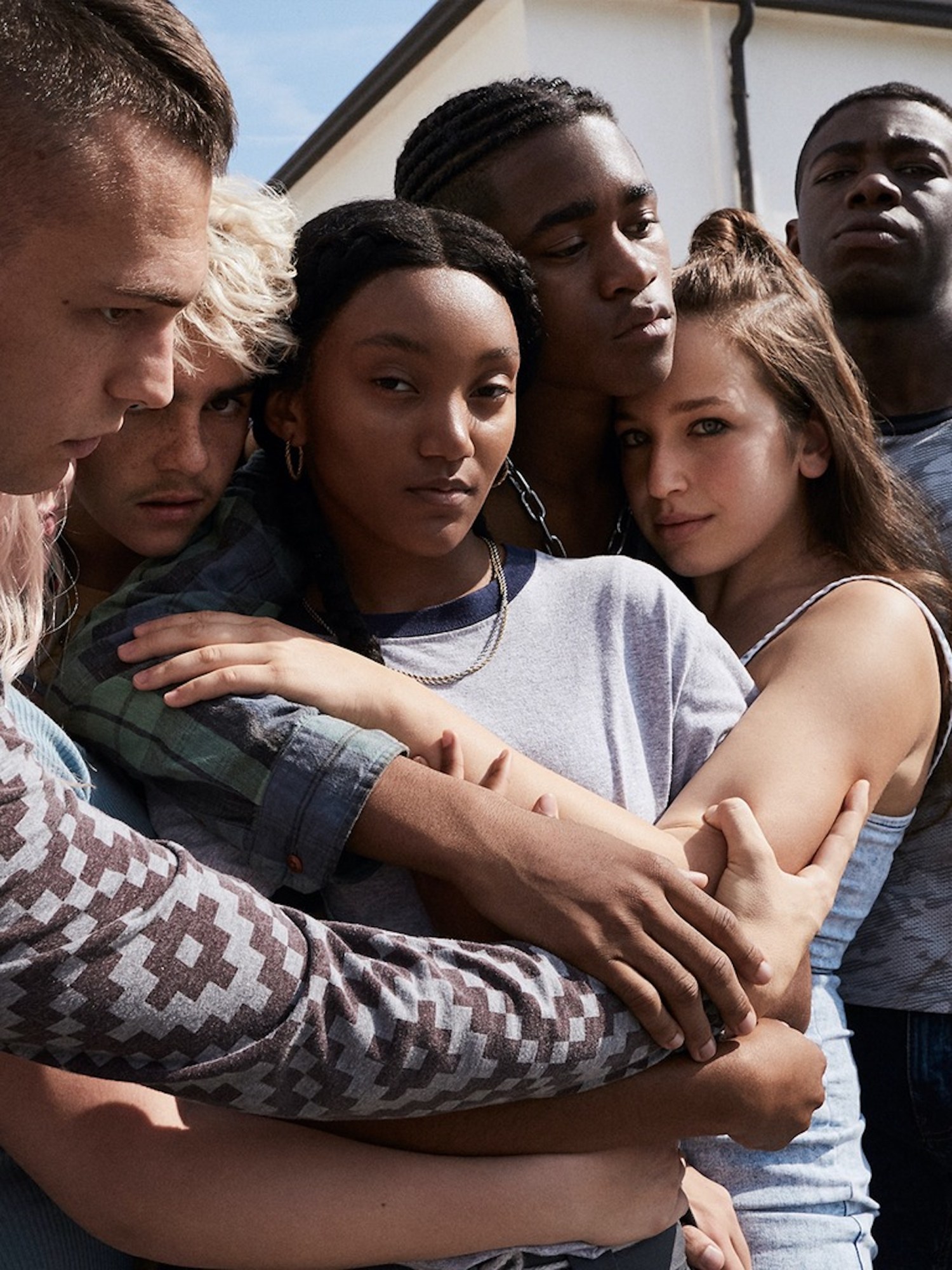Once you see a single picture by Alessio Bolzoni, you will recognise the elements that make them his: bodies contorted and interlinked, leaning into each other. Sometimes, his subjects look like they’re stretching to crack bones, or are fruitlessly trying to find comfortable sleeping positions. They are malleable, and skies often expand endlessly out of the frame.
If you’ve spent any amount of time gazing at billboards in Europe, or within the worlds of Luca Guadagnino, you will have seen these pictures. Having shot for Kris Van Assche’s Dior, Off-White, Fendi and Berluti, Alessio — who was born in Italy, but is now based in London — and his expressive images have become staples of fashion campaigns and editorials. But the codes of his work bleed through into his collaborations with that aforementioned arthouse movie director too. For Call Me by Your Name, Suspiria and, most recently, We Are Who We Are, Luca has enlisted Alessio to shoot stills on set. Far from the screengrab-esque imagery we are used to, they seep beyond the frames Luca creates and act as insights into the characters within the film. Alessio’s artistic stance is inspired, but always pays homage to the project at heart.
This illustrious back catalogue of work led to the publication of his 2017 and 2019 books: Abuse and Abuse II — The Uncanny. The images from the latter were later presented on billboards (by now, a familiar method of display for Alessio’s work) in a project called Action Reaction, pictures of which can be seen below. In this conversation, Alessio discusses the formation of his aesthetic, working with Timothée Chalamet and Armie Hammer on the set of Call Me by Your Name, and how he found a creative confidante in Luca Guadagnino.

You have an instantly recognisable personal style. At what point in your career did you feel that forming?
When I started to create images I already had a specific approach, I would say, but I was also battling with what the market was asking for and I tried to fit the request. But I soon understood that you have to bend the market if you want to create something new: don’t go with it if you don’t like it as it is. And that’s what I tried to do. I pushed the boundaries of the representation of women, not sexualising them but empowering their presence and treating them like male subjects; discovering that beauty is not often a fact of aesthetic. Suddenly, many brands were calling me for my different approach and vision.

Do you see your job as something of a choreographer too?
[In the past], I’ve been asked if I was a dancer or if someone choreographs my sets. None of these can be too far from reality. I ask my subjects to move in a specific way because those movements are creating the possibility for me to catch and freeze a specific action. They never dance but they move and what I look for is that off moment, that wrong incidental situation that I see as perfect. Something uncanny that brings a surreal tone to the image.

When did you first meet Luca, and what is your relationship like?
Luca is one of my best friends, I consider him like my big brother. We met 15 years ago and had an immediate connection. He taught me so much during this time together, especially about the way you create your collaborations and the way you have to believe in yourself before the others, creating what you want, no matter what people can say about it. He’s a funny person but most of all he’s a generous one and I love to spend my time with him: travelling, talking, arguing (a lot!), growing together and sharing experiences.
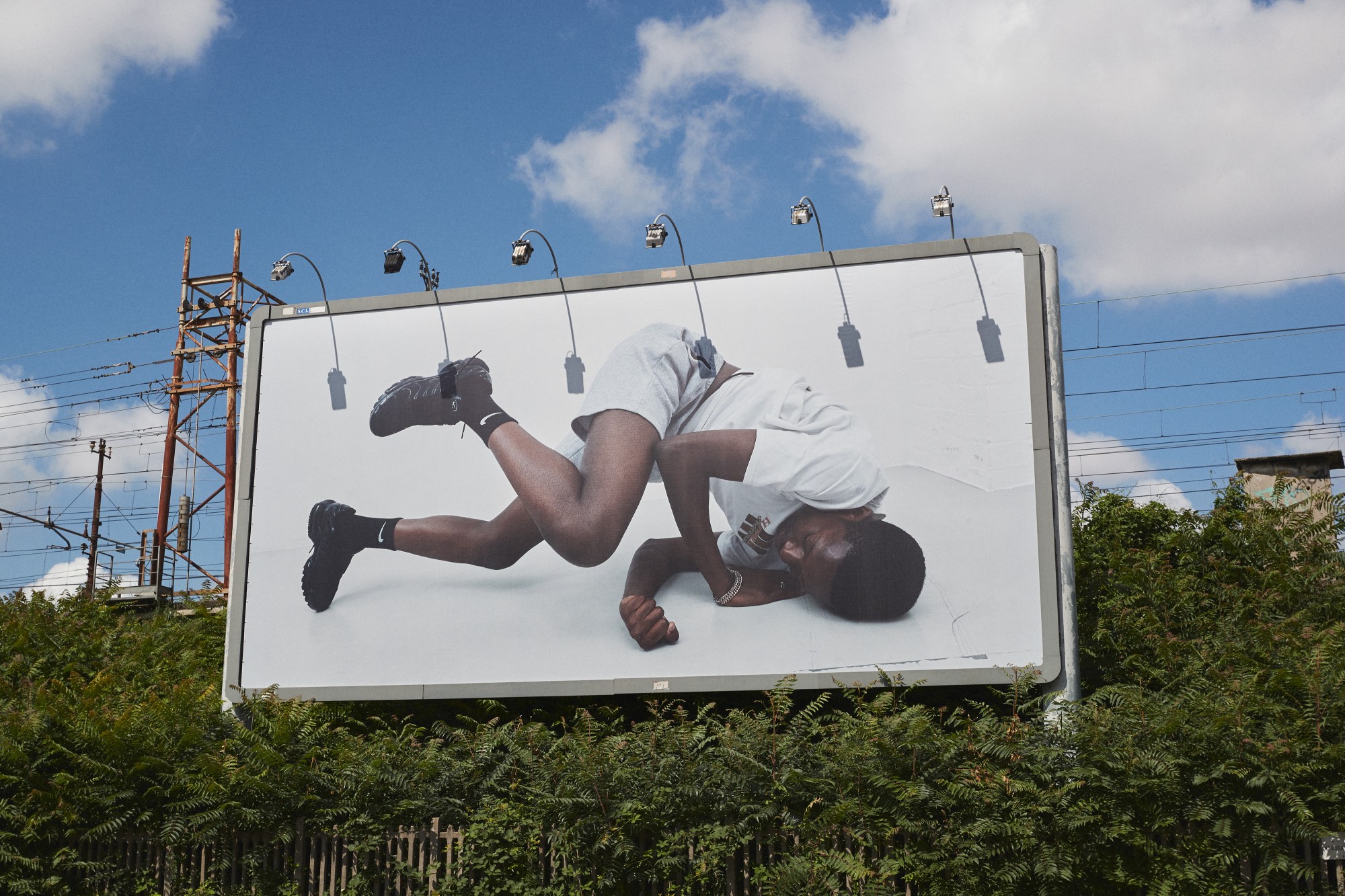
Your shots of Timothée and Armie are famously beautiful, and represent the film so well. What are your memories of that day?
It was a rainy morning but, as sometimes happens, a last-minute change moved our call time a bit. I was starting to get very nervous about it: how can a summer film be represented with this weather? But as soon as we stepped on set, the rain stopped and that famous blue sky came out. Timothée and Armie were great even though they found my way of shooting a bit different, I am sure. But after a few shots, they trusted me and not only followed me but created a beautiful energy between them that was very different from what the film asked them to be. They had to interpret and create a new way to communicate the relation of their characters. And I still remember the moment they clicked, and I was sure that I had some beautiful shots in my hands.
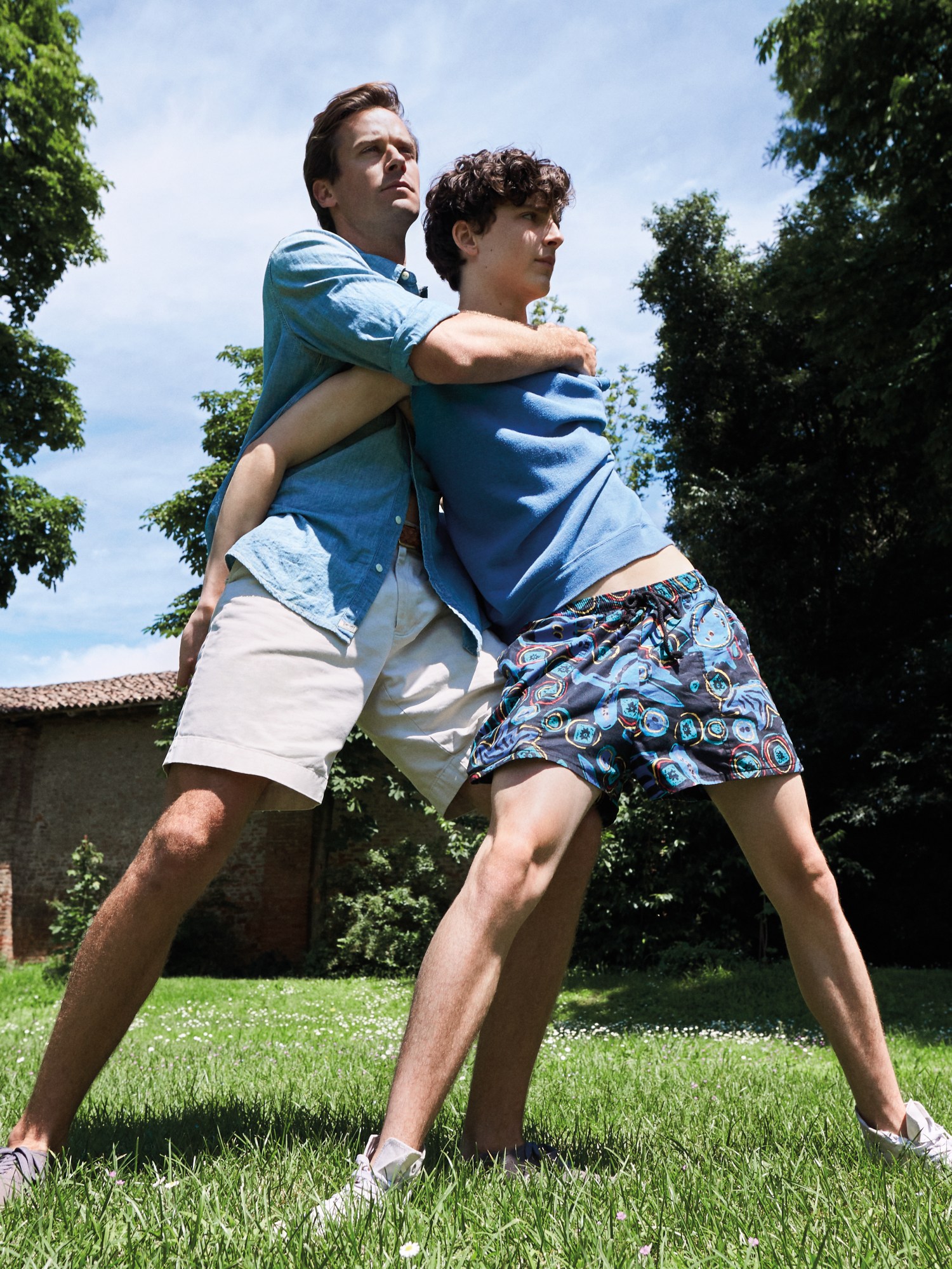
There’s a slow, languorous nature to Luca Guadagnino’s work, but you often capture his characters in states of movement. What are the connotations of Luca’s work to you, and how do you find your own work’s place within it?
Luca has been a great supporter of my work since the day we met. And when he asked me to create images to represent Call Me by Your Name it sounded exciting and also very natural somehow. He knew I would create a shoot that it wouldn’t match his aesthetic and that’s what he probably wanted too.
I am his biggest fan and I adore everything he does and the way he does it. When he asks a collaborator to work on a project he trusts his or her vision completely. And so that’s how he did it with me too. He gave me carte blanche and wasn’t on set that day, which I found a great sign of trust and respect. And since then we’ve collaborated on Suspiria and We Are Who We Are in the same way.
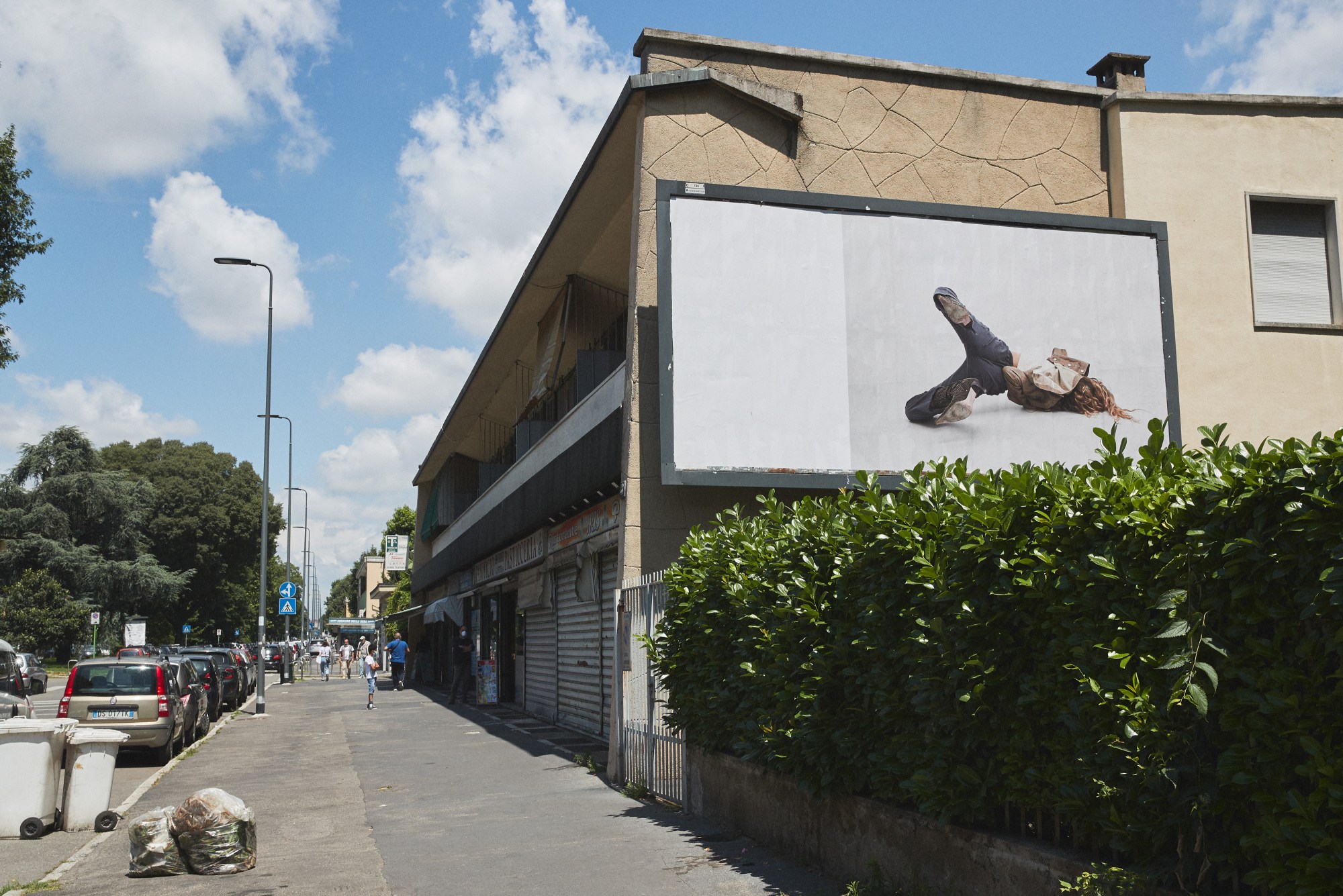
The stills for We Are Who We Are see all of the cast in incredibly close proximity to the point of almost straddling each other. How did you come up with the framing for those shots?
I always start thinking of what the film — that I have to represent — talks about. For Call Me by Your Name it was about intimacy and secret deep love between two young men. In Suspiria, the theatrical aspect was fundamental and some sort of dramatic approach would have represented perfectly the horror side of the movie.
We Are Who We Are talks about a group of young boys and girls that find each other in a very specific situation and decide to support each other and be part of each other’s life actively and intensely even if not for an especially long time. [I wanted to say:] embrace the opportunity to lift up a friend, embrace him/her with all the aspects that a person can bring, no matter what. That’s what I found to be the most exciting aspect of this story. And I visualised the images as they came out: a series of portraits with a sense of trust and celebration to each one of them.
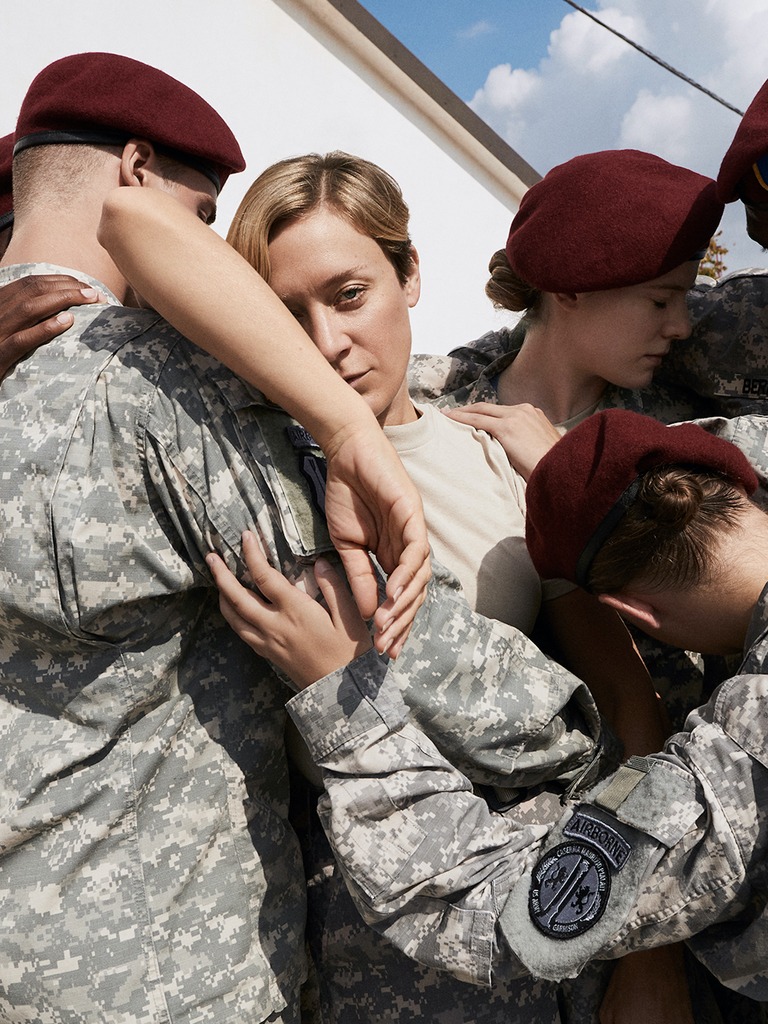
Is there a project that you’ve worked on that you consider the most rewarding?
My collaborations with Luca are extremely dear to me, but also my ongoing project that I am developing and presenting through books is a very important part of my work. I am actually working on a fanzine, with the documentation of the installation of billboards in the streets of Milano that I did in June, right after the end of the lockdown. It was called Action Reaction and showed the images of my work Abuse II – The Uncanny that I published in 2019 on billboards.
I don’t see a great difference between commercial work and more artistic work. In fact, it’s normally my artistic research that moves my way of shooting for commercial purposes. We are in a moment where the fields can intertwine and find new beautiful ways of being.
